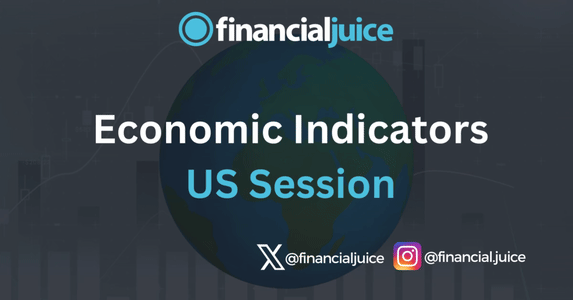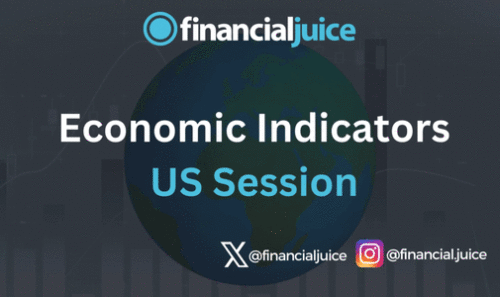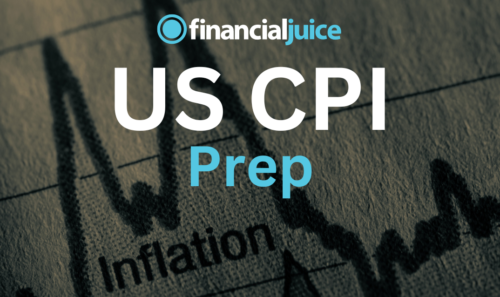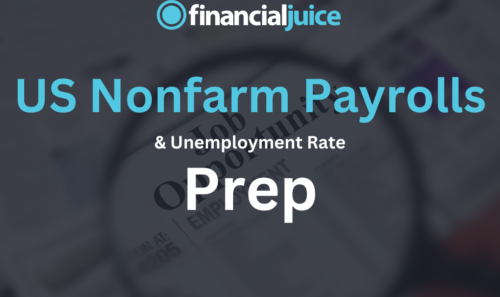
Week Ahead: Economic Indicators (US)
Hey, Traders!
For the August 26th week, here is a list of all of the major economic indicators being released during the US Session, with a brief synopsis of what they represent and what to possibly expect from the markets in reaction.
Monday 26th August
08:30 ET
US Durable Goods July Prelim
The US Durable Goods Orders Preliminary Report provides early estimates of orders for long-lasting manufactured goods, such as machinery, appliances, and transportation equipment.
This data is an indicator of business investment and consumer confidence, as durable goods purchases typically require a significant capital outlay and reflect long-term economic expectations.
Higher-than-expected orders suggest potential economic growth and increased business activity, while lower-than-expected orders may indicate a slowdown in manufacturing and overall economic activity.
Policymakers and investors analyse this report to gauge the health of the manufacturing sector and make informed decisions about future economic trends.
What to Expect
If durable goods come in higher than expected, this indicates higher consumer demand for durable goods, which would underscore resilience in the consumer, and help alleviate fears of a broader economic slowdown.
This could lead to strength in the dollar and US stocks, as well as government bond yields.
The opposite would be true if it came in lower than expected
Keep in mind that if the number comes in considerably higher than expected, this could be seen as an upside inflation risk, which could lead to strength in US stocks, and weakness in the dollar and government bond yields, so the markets will be weighing 2 sided risks when analyzing this report.
Tuesday 27th August
10:00 ET
US CB Consumer Confidence for August
The US CB Consumer Confidence Index is a monthly economic indicator published by The Conference Board.
It measures the confidence of American consumers in the economy based on their perceptions of current economic conditions and their expectations for the future.
This index is derived from a survey that assesses consumers’ attitudes about business conditions, employment, and income.
Higher confidence levels indicate optimism about the economy, which can lead to increased consumer spending and economic growth, while lower levels suggest pessimism and potential reductions in spending.
What to Expect
At this stage in the economic cycle, It is not common for the consumer confidence report to produce a market reaction without a large deviation from the forecast.
If consumer confidence is higher than expected, that would likely lead to strength across US assets (the dollar, bond yields, and stocks), as it will help alleviate fears of a recession, as it shows resilience in the consumer.
If it comes in lower than expected, this could create warning signs for a recession, which would be likely to cause weakness across US assets.
Having said that, the conference board also release the survey results on 1-year ahead inflation expectations, which the market may take note of when trying to determine inflation’s position on the path back to the 2% target.
If higher, we could see some weakness in US stocks and strength in the dollar, and the opposite could be true if it comes in lower.
Wednesday 28th August
10:30 ET
US Weekly EIA Crude Oil Inventories
The US Weekly EIA Crude Oil Inventories report, released by the Energy Information Administration every Wednesday, provides data on the current amount of crude oil held in storage across the United States.
This report helps gauge supply and demand dynamics in the oil market and can influence oil prices and market sentiment.
What to Expect
An increase in inventories suggests lower demand or higher supply, creating a potential downside in oil prices, while a decrease indicates higher demand or lower supply, causing a possible strengthening in oil prices.
Thursday 29th August
08:30 ET
US GDP Q2 Second Estimate
US Gross Domestic Product is a quarterly economic indicator that measures the total value of goods and services produced within the United States over a specific period.
It reflects the overall economic activity and growth of the country.
GDP is used to assess the health of the economy, with increases indicating expansion and decreases suggesting contraction.
It is composed of four main components: consumption, investment, government spending, and net exports.
There are also inflation components in this report, the quarterly Core PCE, and the GDP Price Index.
What to Expect
Markets will likely monitor the US GDP numbers as they relate to broader economic conditions, meaning that if GDP comes in higher than expected, this would reduce the chances of recession, which would be likely to cause strength in US stocks, the dollar, and government bond yields.
If it comes in weaker than expected, this could cause weakness in US stocks, the dollar, and government bond yields, as recessionary fears increase.
In terms of the inflation component, the markets are likely to respond differently to this, as they relate these numbers to their effects on US monetary policy.
This means if the GDP Price index or quarterly PCE numbers come out higher than expected, this would likely cause weakness in US stocks and strength in the dollar and government bond yields, as it would be likely to reduce the chance of larger interest rate cuts this year.
If it came in lower than expected, I would anticipate the opposite, with US stocks strengthening and the dollar and government bond yields weakening, as it would increase/solidify bets on Fed rate cuts this year.
US Weekly Initial & Continued Jobless Claims
The US Weekly Initial & Continued Jobless Claims report, released every Thursday by the Department of Labor, tracks unemployment claims.
Initial claims measure the number of people filing for unemployment benefits for the first time, indicating new job losses.
Continued claims represent the number of people still receiving benefits after their initial claim, showing ongoing unemployment levels. These figures are key indicators of labor market health, with rising claims signaling potential economic weakness and declining claims indicating job market improvement.
What to Expect
With employment in focus at the moment, as the Fed focuses on the employment side of its mandate, higher-than-expected jobless claims numbers, indicating higher unemployment, would likely fuel fears of a deeper economic slowdown, and confirm the narrative in the markets that the Fed should have reduced rates in the last meeting when they had the chance to avoid a hard landing for the US economy.
This would likely cause weakness in US stocks and the dollar.
The opposite would be true if it came in lower than expected, as this would reduce fears of a larger slowdown, increase chances for a soft landing, and cause potential strength in US stocks and the dollar.
Friday 30th August
08:30 ET
US PCE Price Index for July
The US PCE (Personal Consumption Expenditures) Price Index is a key measure of inflation released monthly by the Bureau of Economic Analysis (BEA).
It reflects the changes in the prices of goods and services consumed by households.
Unlike the CPI, which measures out-of-pocket expenses, the PCE Price Index also accounts for changes in consumer behavior and covers a broader range of expenditures.
The Federal Reserve closely monitors the PCE Price Index, especially the “core” version that excludes food and energy, to assess inflation trends and guide monetary policy decisions.
What to Expect
Higher than expected inflation numbers in this report would likely cause weakness in US stocks, and strength in the dollar and government bond yields, as it feeds into the higher for longer rate narrative, which could reduce chances of an interest rate cut at the next meeting.
Lower than expected numbers would likely do the opposite, strengthen US stocks and weaken the dollar and government bond yields, as traders solidify/increase bets on rate cuts from the Fed this year.
Keep in mind that markets have to balance between the effects of monetary policy and the state of the broader economy at this current stage in the economic cycle, which could cause some volatility/unpredictability to the market reaction.
10:00 ET
The University of Michigan Sentiment Survey August Final
The University of Michigan Sentiment Survey is a monthly survey that measures consumer confidence in the United States. Conducted by the University of Michigan, it gathers information on consumers’ views regarding their personal financial situation, business conditions, and overall economic outlook.
The survey results are presented as an index, with higher values indicating greater consumer optimism.
This report also contains 1 and 5 year inflation expectations from the opinions of the survey respondents.
What to Expect
Higher consumer sentiment would likely decrease the chances of a recession in the US economy, which is currently in focus.
Higher sentiment would therefore be likely to cause strength across US assets (stocks, dollar, and bond yields), as it would alleviate fears of a broader economic slowdown
Lower consumer sentiment would likely cause weakness across the US assets, as it would spark recessionary fears.
Higher-than-expected inflation expectations would likely cause weakness in US stocks, and strength in the dollar and government bond yields, as traders weigh the effects that higher inflation expectations would have on monetary policy, possibly promoting a return to the ‘higher for longer’ narrative on interest rates.
Lower-than-expected inflation expectations would likely do the opposite, as it would solidify the Fed’s ability to cut rates at the next meeting.





